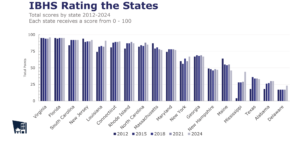Two-Minute Q&A Chat Series
Note: This is the fifth in a series of blogs on distribution management and insurance transformation by Majesco and PwC. Today’s blog features a dialog between Denise Garth, Chief Strategy Officer at Majesco, and Luke Suczewski and Haley Wellener from PwC’s Insurance Transformation practice.
Denise Garth: Welcome back to our “Two-Minute Q&A Chat” exploring distribution management, where we ask the tough questions on how to get the most out of your transformation. In our previous discussions, we introduced the DM Maturity curve and discussed how carriers can define their current location on the curve, as well as some deeper dives into specific parts of the curve. Today we are joined by Luke Suczewski and Haley Wellener, both members of PwC’s Insurance Transformation practice. We are excited to take a closer look at transformation trends in the disability and absence management space!
Q1: We’ve been talking about digital transformation for probably the last 3-5 years. What do you both see differently today, than say five years ago, and why is this digital transformation such a mandate for growth and competitive dominance for insurers?
Haley Wellener: Even before the pandemic, carriers have been modernizing technology stacks and driving transformation to some extent, but with COVID bringing us into this virtual “new normal”, as well as employee and employer demand for new products and services, and the demand for seamless digital experiences, all of these factors are really forcing carriers to accelerate investments into digital transformations more so than they were five years ago. To capture market share and meet demands of the customers, carriers need to now drive these transformations across the full value chain. The increasingly digital and evolving world is really accelerating this imperative for digital transformation, or else carriers risk being left behind by the competition.
Luke Suczewski: I agree with Haley, and one area in particular where we’re seeing this is in disability and absence. In disability and absence, the race for dominance is accelerating faster than ever. Carriers and competitors are racing to win the market and position themselves for sustained success. The pandemic is certainly changing customer needs and expectations.
Q2: I think it’s interesting, the combination of the Great Resignation and the Great Re-Alignment of the workforce, combined with regulation and technology and experiences with the pandemic have all coalesced together to refine that strategic focus for insurers. Why is integrated disability and absence management becoming so much of a priority for insurers to really consider? And why is it becoming so customer-focused?
Luke: One big change over the last five years is the centricity of the employee life event. More than ever before, those that are winning in the space look at the employee life event and bring an empathetic approach to that difficult moment, and doing so while bringing a good, efficient experience to the employee. Haley has great examples of how we’re seeing that play out with our clients.
Haley: On legacy platforms, multiple records have to be created to manage one life event. Each of these individual records triggers individual correspondence to be sent to the claimant, which can be very confusing and stressful for the employee. Providers are now looking to take that complexity out of the customer experience and offer a more empathetic experience by using event-based solutions. With event-based solutions, the system is smart enough to recognize that all these records are associated with one employee life event.
Q3: We’ve talked about some of the key shifts we’ve seen in the last three to five years, but looking ahead, what do you predict are the biggest changes we’ll see in the next three to five?
Luke: I think some of the trends we’ll see in the next three to five years is continued product expansion, especially in the voluntary benefits space and overall group picture. I think there will be an emphasis on self-service and self-service capabilities, with employees having new digital tools to be able to manage their policies, claims, and absences. Last, I think there will be an increase in third-party integrations. Haley, curious to hear your perspective on this as well.
Haley: I agree with everything Luke shared, and I think at a higher level digital transformation is going to force these group and benefits providers to operate outside their traditional norm, pushing them to think big but start small, be willing to test and learn, and fail fast. Some of the providers that undergo successful transformations are going to shift and become like technology companies. This will be a big shift in how we see traditional insurers operate going forward.
Q4: If you could pick one word or phrase to describe the future of insurance, what would you pick and why?
Haley: My word is ‘digital’. I think, as we’ve talked about, we’ll start to see more insurance companies acting like technology companies as this ‘Digital First’ mentality starts to stick. I think we will begin to see more digitally focused companies begin to come to the forefront around the traditional insurance companies.
Luke: I would say ‘fast’. I think today the accelerating pace of competition, of digital transformation, of the megatrends in the industry is moving fast and accelerating faster than each year before.
Find out how Majesco and PwC are working together to reshape the future of Distribution Management.
By Denise Garth, Luke Suczewski and Haley Wellener from PwC’s Insurance Transformation practice




















 What Industry Executives Are Saying About Loss Reserves, Social Inflation
What Industry Executives Are Saying About Loss Reserves, Social Inflation  Study: Average Cyber Breach Insurance Coverage Gap is 350%
Study: Average Cyber Breach Insurance Coverage Gap is 350%  Survey: Majority of CA/FL Homeowners See Rise in Insurance Costs, Coverage Changes
Survey: Majority of CA/FL Homeowners See Rise in Insurance Costs, Coverage Changes  Travelers: Distracted Driving Incidents Continue to Rise
Travelers: Distracted Driving Incidents Continue to Rise 



